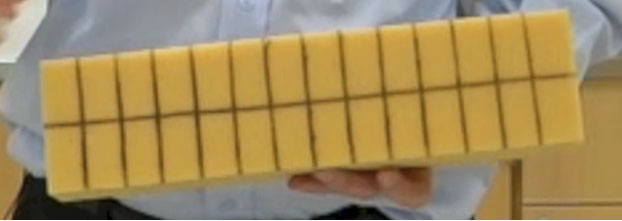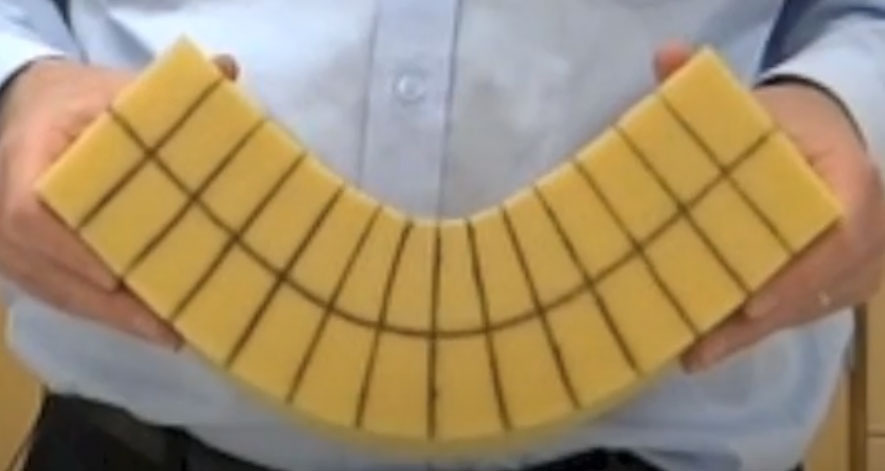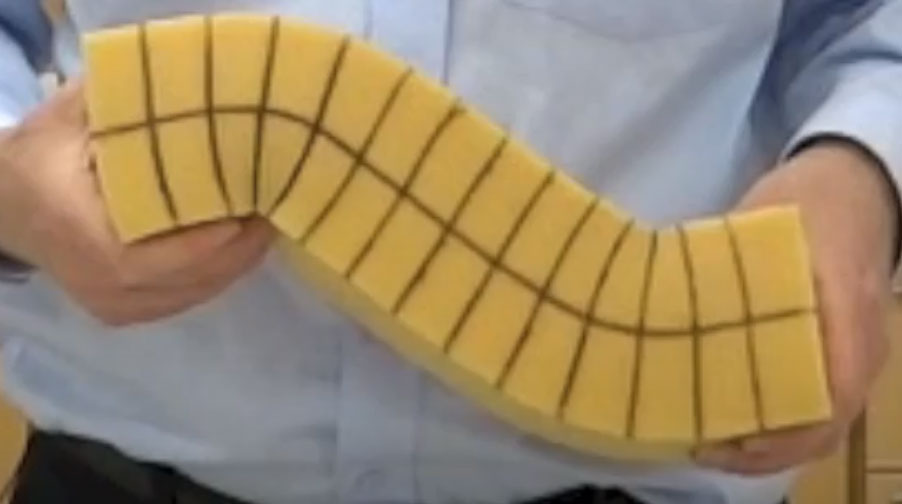Description
This simple kinematics model was made from a 10 x 10 x 40 cm block of “furniture foam”. A black marker was used to draw a line along the longitudinal centerline of one side, and transverse lines were added at regular intervals, as shown below (Fig. 1).
 Figure 1 – The Undeformed Model Beam
Figure 1 – The Undeformed Model Beam
Even though the foam material is highly non-linear and behaves quite differently in tension and compression, planes that are normal to the neutral axis remain straight and normal as it deforms (Figs 2 and 3).
 Figure 2 – Bending of the Model Beam
Figure 2 – Bending of the Model Beam
 Figure 3 – The Model Deformed into a Serpentine Shape
Figure 3 – The Model Deformed into a Serpentine Shape
Learning Objectives
The model helps students to:
- See how the centerline of a beam curves as the beam is bent
- Recognize that the length of the centerline does not change
- Visualize how normals to the centerline remain straight during bending
- Envision that normals to the centerline remain at 90° to it
- Understand the geometric constructions from which beam kinematics is derived
- Better understand the derivation of standard beam bending equations, such as ε=-z/ρ, where ε is the axial strain, z is the distance of the point of interest above the neutral axis and ρ is the radius of curvature of the beam, considered positive when its center is above the beam.